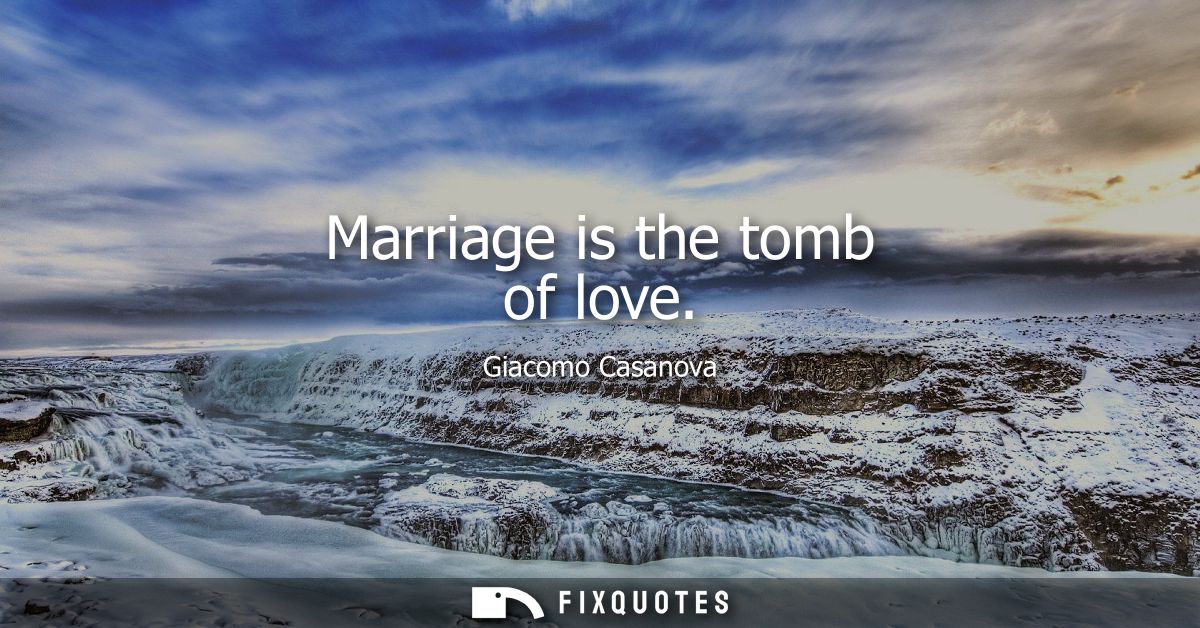"Marriage is the tomb of love"
About this Quote
Giacomo Casanova, the legendary Venetian adventurer and lover, delivers a provocative and cynical observation with his assertion that marriage is the tomb of love. By equating marriage to a grave, he implies that the institution, rather than nurturing love, actually suffocates or kills it. The metaphor conjures the image of love as something vibrant and free, only to be interred and constrained by the formal bonds and expectations that marriage entails.
Casanova’s historical context is crucial, as he lived during the eighteenth century in a society where marriage was often less a union of passion and more a social contract and tool for economic or political gain. In such arrangements, genuine affection and romantic sentiment frequently took a backseat to practicality. Thus, for a libertine like Casanova, known for his passionate escapades and rejection of conventional norms, marriage might have seemed an antithesis to authentic, spontaneous love.
Furthermore, his sentiment suggests that the rituals and duties attached to marriage introduce monotony and obligation, smothering the excitement of romance and desire that defined his own affairs. The repetition of daily life, the merging of private and public identities, and the social scrutiny can corrode the freshness and idealization that characterize the early stages of love. Under such pressures, Casanova suggests, love loses its vitality and slowly dies, entombed by routine and responsibility.
However, his perspective is undeniably one-sided, shaped by personal experience and perhaps a refusal to reconcile passion with commitment. It situates love as something fleeting, only vibrant in freedom, and dismisses the potential for deeper, evolving love that marriage can foster in many relationships. Casanova’s statement functions as a caution, a challenge to the romantic idea that marriage is always the ultimate expression of love, reminding us that love and social institutions are not always harmonious companions.
More details
About the Author

